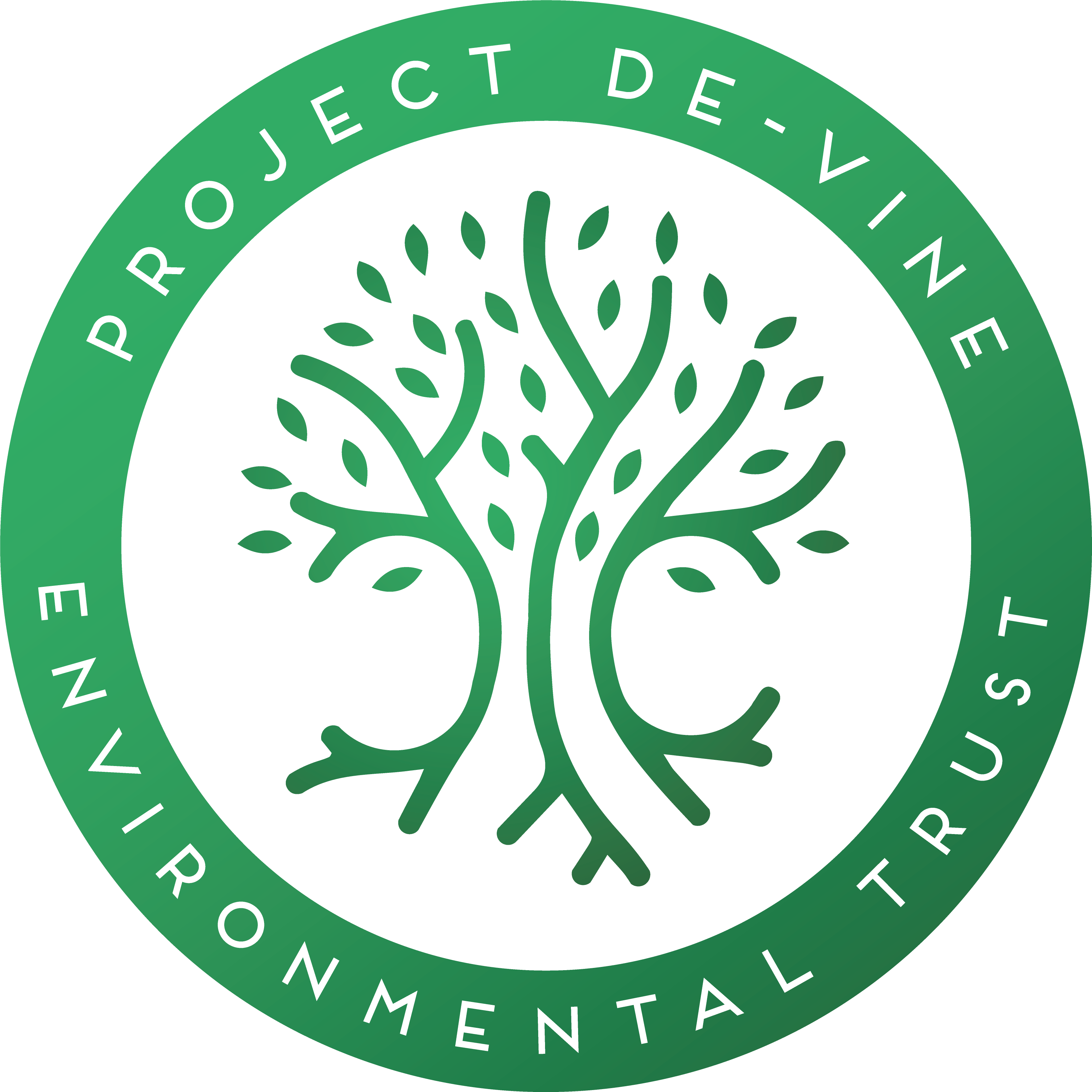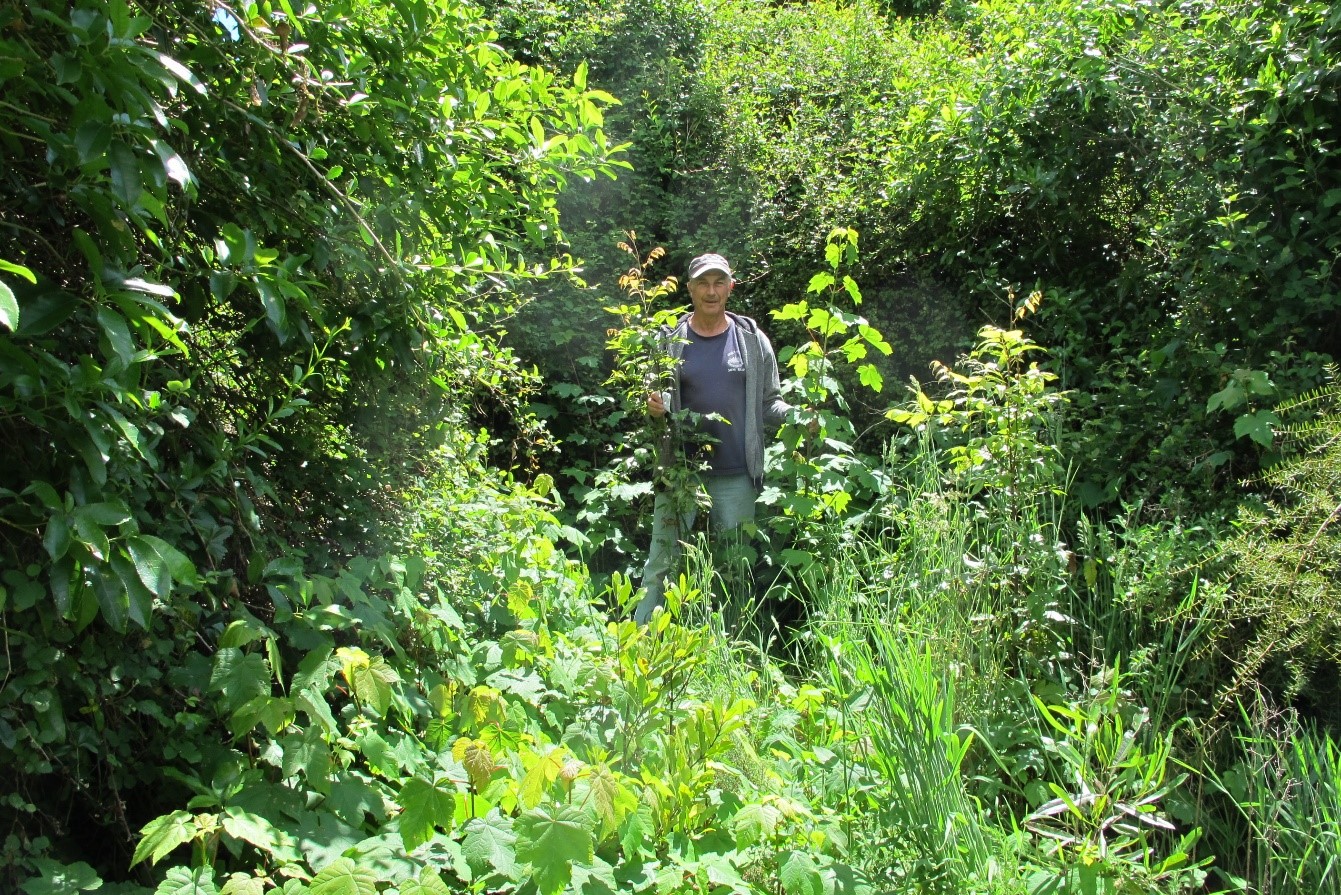Project Directors Report Project De-Vine Trust
AGM December 2017
The illustrations that Neil has highlighted show how Project De-Vine’s strategy work. In this report, I will be commenting on our past successes and on our strategy for the coming years.
In an age where grants are becoming increasingly harder to compete for, the way forward to realise our strategies is to work with coalitions. One of the first of these was with Project Janszoon and Fonterra to obtain two Lotteries grants, which are finishing in May 2018.
Now our next big one is aiming to achieve a major control programme in the Lower Takaka Valley floor. It will involve the main sites in that area of two invasive plants, Woolly nightshade and Climbing asparagus as well as working to stop the spread of these, Italian jasmine and the pest vines Banana passion vine and Old man’s beard across the valley, where they are already threatening the boundary of Kahurangi National Park. With support from TDC, and funds from TET and DOC we will apply to Lotteries in 2018.
This strategy allows us to think on a landscape scale. At the same time, our contracted work feeds in to what are doing and provides us with some “surplus” finances to aid our running costs.
As you can see in page 2 of the table provided, we keep our finances to a tight budget. Two key grants to cover our essential office expenses from TDC and DOC will finish on 30 June 2018. We are applying to Rata foundation for part of what we need and hope to be able to apply to TDC and other sources for the balance. We anticipate that the basic amount of $45k per annum will sustain our needs.
Grant dependency is a precarious process, but our record of success, in all but one major funding application, speaks for the regard that our work has achieved. We have killed over 300,000 pest vines manually and many more by spraying. To date we have received $1,240,000+ in grants and have sizeable annual contracts that you can see in the table page one. This includes the newly announced DOC Community Fund of $80k over two years to carry out control work in Ligar Bay to Wainui Hill. This will complete one of our primary goals of carrying out three years of pest vine control work on all properties, except for a couple of very large ones we are still chipping away at, along the eastern escarpment of Golden Bay from Rameka Creek to Wainui. This strategy was developed with the Forest and Bird support person who oversees their large projects.
Once we have completed the three years of intense control work, the vines are massively reduced and alternate years of visits are sufficient to kill the emerging vines as the seed sources dwindle. Rata foundation are helping us with this phase and have funded MU-D1 and 2 repeat visits, with MU-D3 (Pohara) planned for 2018. We are aiming at Wainui (MU-D5) and East Takaka (MU-F) in 2019.
We are not only focused on eastern Golden Bay, but have a retired member of our team maintaining MU-A and B in the west for pest vine control as well as a sizeable programme in MU-C (Puramahoi) which has created a wedge of control between Kahurangi National Park and the sea. This wedge is expanding as funding allows.
The only areas still needing major attention are in the Takaka valley. With the 2018 Lotteries application for the lower part of the valley (MU-D6 and part of MU-G1) we hope to address this important area. In 2 or 3 years time we plan to move further up the valley to include all MU-G1 and MU-F and later on MU-G2 in the upper valley.
As funds allow we are turning our attention to the other invasive plants as well. To achieve this we need some power when it comes to plant control enforcement with reluctant landowners. We were involved in the reviews of the Regional Pest Management Strategies in the past by having Banana passion vine added for Golden Bay in 2007, Climbing asparagus for part of eastern Golden Bay in 2012 and now currently submitting to the draft RPMP where Woolly nightshade and Italian or Yellow jasmine have been added for all Golden Bay. Banana passion vine and Old man’s beard have also had their boundaries extended to cover the Marahau to Riwaka area, reaching west as far as the Riwaka Resurgence Road and down to the sea (MUs-H and I). This new review, if confirmed, will give us even more incentive and ability to achieve and maintain a landscape scale change to Golden Bay for pest plant control in to the future.
Chris Rowse – Project Director for Project De-Vine Trust
Download copy here


